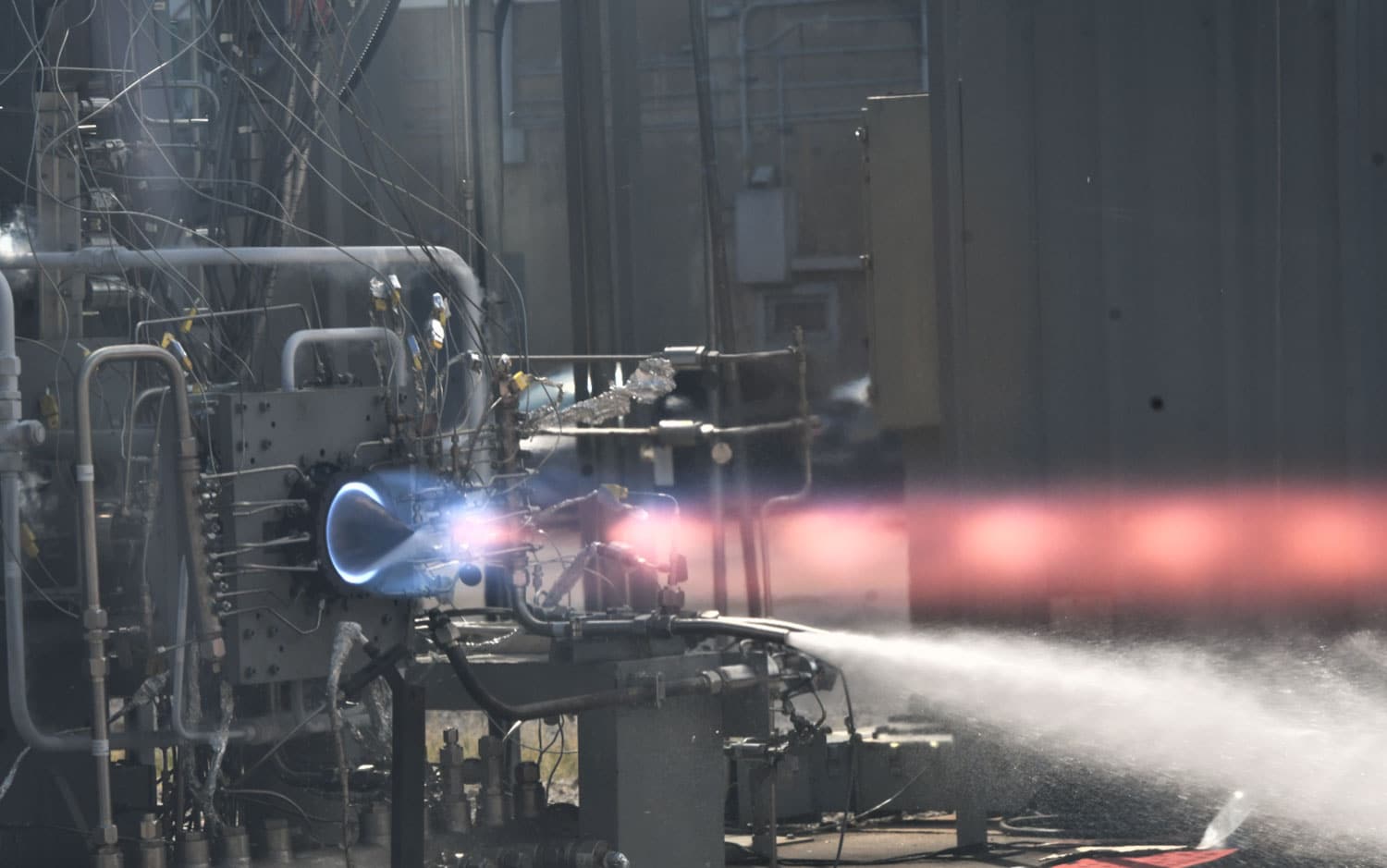
As NASA prepares to return to the moon with the Artemis mission, a team of propulsion development engineers at NASA have developed and tested NASA’s first full-scale rotating detonation rocket engine (RDRE), an advanced rocket engine design that could significantly change how future propulsion systems are built.
The RDRE is different from a traditional rocket engine because it creates thrust from a supersonic combustion process called detonation, in which a supersonic exothermic front accelerates to produce thrust, much the same way a shockwave travels through the atmosphere after something like TNT explodes. NASA says this design uses less fuel and produces more power than existing propulsion systems and that the RDRE could be used to power both human landers and interplanetary vehicles to deep space destinations, such as the Moon and Mars.
Data from RDRE hot fire tests conducted in 2022 at Marshall’s East Test Area is confirmed by engineers at NASA’s Marshall Space Flight Center in Huntsville, Alabama, and primary collaborator IN Space LLC, located in West Lafayette, Indiana. The engine was fired more than a dozen times for a total of nearly 10 minutes in duration, the space agency reports.
Through testing, RDRE has proved that its hardware – made from novel additive manufacturing or 3D printing, designs, and processes – could operate for long durations while withstanding the extreme heat and pressure environments generated by detonations. Operating at full throttle, the rocket engine produced over 4,000 pounds (17.8 kilonewtons) of thrust for nearly a minute at an average chamber pressure of 622 pounds per square inch. This is the highest pressure rating for this design on record.
The RDRE incorporates the NASA-developed copper-alloy GRCop-42 with the powder bed fusion additive manufacturing process, enabling the engine to run in harsh circumstances without overheating. Additional milestones achieved during the test include the successful performance of both deep throttling and internal ignition.
This successful demonstration brings the technology closer to being used with future flight vehicles. NASA argues that the new rocket design could enable the agency and commercial space to move more payload and mass to deep space destinations, an essential component to making space exploration more sustainable.
With successful tests, NASA engineers are now working on a fully reusable 10,000-pound class RDRE to identify performance benefits over traditional liquid rocket engines.
NASA’s development of the RDRE signals the space administration’s interest in developing more efficient rocket technology for space travel. Earlier this week, NASA announced a joint collaboration with DARPA to develop and demonstrate a nuclear thermal rocket engine (NTR) for interplanetary travel, reducing travel time with a more efficient propulsion technology.
NASA tests rotating detonation rocket engine for deep space exploration
Source: Tambay News

0 Comments